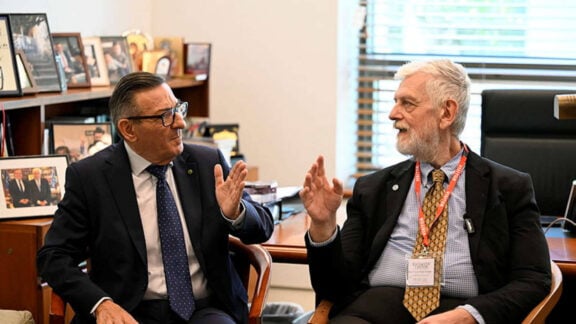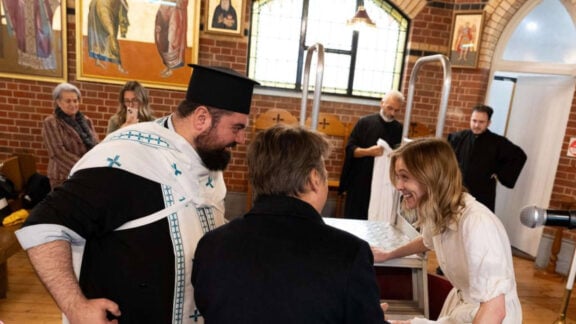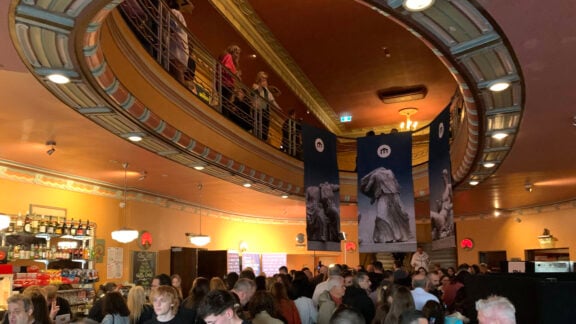A recent letter published in the Neos Kosmos English edition suggested that the ancient artefacts currently on loan to the Bendigo Museum from the British Museum should somehow be repatriated to Greece. I feel the author of this letter did not research the topic sufficiently before submitting his letter for publication.
The artefacts on display include monumental sculpture, Greek vases, terracottas, bronze statues, gold jewellery and a single mosaic. Let us look at one of these groups of artefacts, the Greek vases. An understanding of the provenance and find places of these wonderful Greek vases on display will highlight the difficulties one would have in deciding where these vases should be repatriated if this situation ever were to arise. There are 54 vases on display; of these 53 are Attic or Athenian, the remaining vase was made in Southern Italy (Magna Graecia) and found in Ruvo, Italy. Of the 53 Attic vases, three were found in Kamiros, Rhodes; one was found in Tanagra, Boeotia, and a further one was found in Greece, exact site unspecified. There are 12 vases with an uncertain find spot. The remaining 36 vases had find spots in Italy. In fact, most were found in Etruria, with 25 having come from the ancient Etruscan city, Vulci. Any student of ancient Greek art will knows that the finest Attic vases were exported to Etruria, Italy and that most of the Attic vases that are to be found in the major European and American museum collections were in fact found in Italy and not Greece. Many of the finest Attic vases have been found on the Etruscan estate of the younger brother of Napoleon Bonaparte, Lucien (also known as the Prince of Canino).
Therefore, if one were to consider on a moral ground whether to repatriate these vases, where should they go? To Italy or Greece? In fact, we know whenever an important Attic vase of uncertain provenance is suspected of having been acquired illegally, the Italian Cultural ministry and not Greece will generally claim this vase. The most obvious example is the Euphronios Krater (a red figure vase manufactured in the Kerameikos, Attica but exported in ancient times to Etruria) once in the Metropolitan Museum of Art and now in the Villa Giulia Museum, Rome.
Even more problematic with the concept of repatriating the artefacts currently on loan to the Bendigo Museum is that a significant number of the remaining artefacts are in fact Roman (the wonderful marble Roman statues found in Hadrian’s Villa, Tivoli, Italy) or have find spots that are neither Italian nor Greek. For example, the wonderful Laconian bronze statue of a running girl said to have been found in Kosovo. Should this statue be returned to Kosovo or a local Laconian museum? We then have to decide what to do with the objects with no find spot, given that ancient Greek artefacts are found throughout Europe and North Africa.
Furthermore, there is the UNESCO convention of 1970 that deals with stolen cultural objects. All the artefacts on display were acquired long before this date by the British Museum, with most having been acquired in the first half of the 19th century. A bell krater made in Athens attributed to the Dinos Painter was in fact acquired by the British Museum in 1772. On a legal basis there would be no legitimate way these objects could be considered for repatriation.
The ownership of the past is a vexed and contentious issue, much has been and will continue to be written about this issue. It is important that we approach this issue in a rational way and do not make the mistake of considering all antiquities in the same way. To consider the artefacts in Bendigo in the same way at the Parthenon Marbles is wrong and unlikely to be helpful.
I hope this letter contributes to a better understanding of the issues surrounding how ancient artefacts are dealt with by museums. I understand this is a very emotive issue, but it is important we approach this issue with some understanding of how these objects were acquired by museums such as the British Museum, including the laws of the land at the time they were acquired. We should also recognise that key international conventions such as the UNESCO and the UNIDROIT conventions provide frameworks for museums and collectors in dealing with antiquities.
*Dr John Voukelatos is a physician and cardiologist at the Melbourne Heart Centre.








